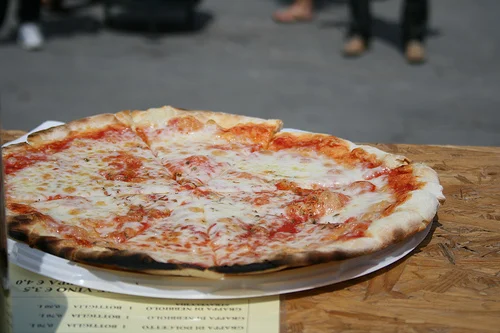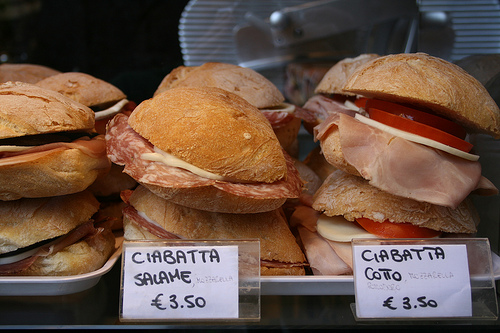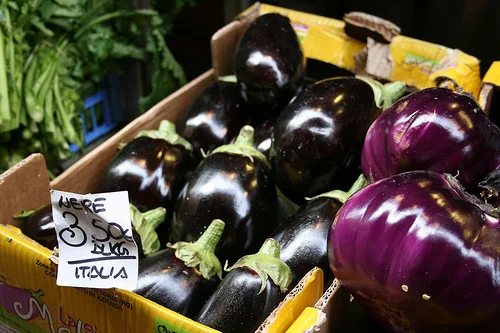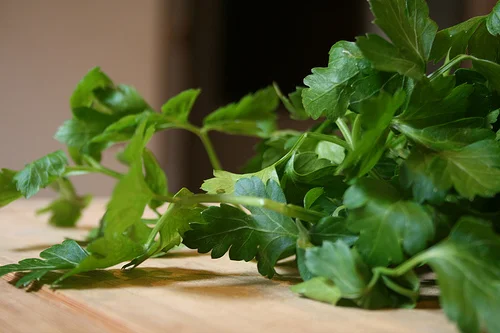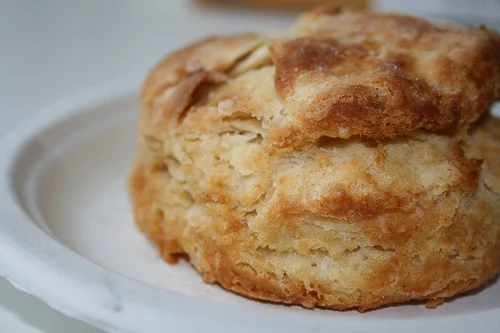flour 101: amount of protein and why it matters.
A friend recently wrote me a question about making pizza dough. She had made a number of batches but wasn't happy with the results. Do you have a good recipe? She asked me. Any suggestions? Which gave me pause.
When I was in culinary school, one of the first classes I took was at 6am---with a then very-pregnant chef whom I love to this day---Intro to Baking & Pastry. It was a perfect way for me to ease into the realm of culinary school, and all of its nuances and requirements. I was getting used to wearing an apron, with a towel hanging off my rear-end. It was the beginning of folding 'mis en place' into my kitchen... and life. I learned to keep a wet washcloth nearby to keep my working space clean, and to gather all my tools and ingredients---and read the recipe thoroughly---before I began.
It was a good time in my life---when I finally captured the dream of going to culinary school.
And I was full of questions. And I knew some were stupid questions---but I had those kind too. I had gaping holes in my culinary repertoire, things you would assume I knew but I didn't. Things anyone would have known if they spent 5 minutes in the kitchen... even some of those details evaded me. It was time to put it altogether.
In culinary school I learned habits (here are five weird ones), over-arching cooking methods, cultural cooking (American cuisine, Asian cuisine, French cuisine), history and current trends. I learned that I had a lot to learn. And it occurred to me: at cooking school some things you only try once (fabricating a duck, making salmon terrain, cutting open a chipolte comes to mind)---then you need to go home and practice beyond that 'once'. I also learned a little science. Especially in this very first baking class.
Eggs, for example. I am equally perplexed and intrigued when it comes to eggs and their lavish wardrobe... so many possibilities and ways to use them. Yeast too, is really quite magical---an ingredient to befriend. Part of learning to bake, I realized... is learning a lot about a few seemingly simple yet extraordinary ingredients.
Like flour.
And when you get to know flour, then you will have an understanding of how flour behaves when heated or mixed or dampened. And then you will know exactly what type of flour you want for your pizza dough: just the way you like it. And you will learn that the flour you choose for cut-out cookies has a little extra protein/gluten so it won't spread during baking. And if you want a bread-y dough for pizza: again, higher protein in the flour. Want a crispier crust or cookie? Less protein in the flour... and so on. Here is a quick low-down for you to commit to memory:
Different types of flour:
Bread Flour: 12-15% protein All-Purpose (AP) Flour: 10-12% protein Cake Flour: 6-8% protein Pastry Flour: 8-10% protein Italian '00' Flour: 7-9% finely milled/fine grind. (roughly translates to southern soft-wheat AP flour; used for cookies and pizza) Italian '0' Flour: 9-10% medium milled/medium grind. (roughly translates to northern/midwest hard-wheat AP flour; used for pizza and bread) Semolina Flour: 13% or more (made from durum, the hardest wheat grown; used to make pasta).
Name brand ALL PURPOSE flours:
King Arthur: 11.7 % protein Hodgson Mill: 11.5-11.9 % protein Gold Medal: 10.5 % protein Pillsbury: 10.5 % protein
Keep in mind/good to know:
- more protein means more gluten means more structure. More protein is ideal for breads, cut-out cookies and baking-with-yeast.
- use low protein flours for a more tender crumb; best for cookies, muffins, quick breads.
- use cake flour for biscuits, cakes and pie crusts.
- to answer my friends question about pizza crust: if you want a bread-like crust use high gluten or AP flour. If you want it thin and crispy, use half AP and half pastry or low-protein flour. (in Italy I use half '00' and half '0').
- please note: this is a general guide. Protein content and quality differ based on where the wheat is grown, when it is harvested, how it is milled and processed.
- think: when making cookies or bread or pie... the more flour you add the more protein you are also adding... each Tablespoon counts.
- AP flour from the southern part of the US has less protein than AP flour from the midwest/northern US.
- although whole-wheat flour technically is high protein, the bran itself cuts gluten strands... making its protein qualities less effective. In other words: it is typical for whole-wheat to be mixed with AP flour in recipes, to obtain the sought-after results.
- check out the label: if it says 'soft wheat' that is a loud hint for 'lower protein.'

